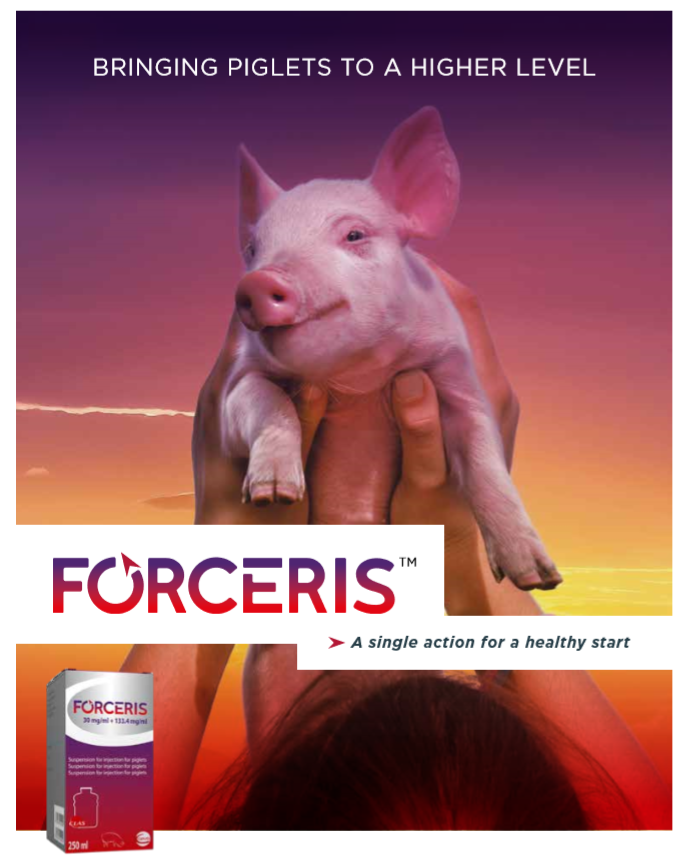



Anaemia
Background and history
Anaemia is a condition associated with either a reduction in the number of red cells in the blood, the amount of haemoglobin they contain, or the volume of the red cells themselves.
It can arise in one of three ways:
- Loss of blood through haemorrhage. Typical examples would be gastric ulceration, trauma to the vulva or a ruptured liver.
- Lack of haemoglobin due to dietary insufficiencies, particularly iron and copper.
- Reduced numbers of red cells. These are produced in the bone marrow and any disease, infection or toxic state affecting it may result in anaemia.
Anaemia is also common as a secondary clinical sign to specific diseases, such as actinobacillus pleuropneumonia or glässers disease.
Clinical signs
Piglets
Piglets appear pale from 7 days onwards and growth is sometimes slower. The colour of the skin may take on a slight yellow or jaundiced appearance. In severe cases breathing is rapid particularly with exercise and there may be a predisposition to scour.
All pigs
- Pale skin.
- Rapid breathing.
- Jaundiced sometimes (skin has slight yellow appearance).
- Mucous membranes of the eyes are pale.
- Scour, sloppy diarrhoea.
- Signs of haemorrhage.
- Symptoms of specific disease.
- Weakness.
- May be increased stillbirths.
- Haemorrhage may be obvious to the exterior or it can occur through bleeding into the tissues or the gut. Warfarin poisoning can cause severe bleeding into the tissues.
Diagnosis
Anaemia can be diagnosed on clinical grounds and by examining a sample of blood. This is tested for the red cell volume and the haemoglobin levels. (Normal levels 9-15g/100ml), anaemia <8g/100ml). A stained blood smear will also confirm the shape and size of the red cells and whether there are any bacteria present. Specific cell types are involved in the different anaemias. Iron dextran toxicity associated with vitamin E deficiency may give rise to anaemia in piglets.
Causes
- Eperythrozoonosis (Epe)
- Gastric ulcers
- Haematoma
- Internal bleeding
- Loss of blood visible
- Porcine enteropathy (PE)
- Prolapse of the rectum
- Torsion of the stomach and intestines
- Faulty nutrition.
- Lack of iron or copper.
- Warfarin poisoning.

In one single injection, Forceris™ prevents iron deficiency anaemia and controls coccidiosis. Forceris™ is the combination of two best in class products: - Gleptoferron, a high performance injectable iron - Toltrazuril, the well-known anticoccidiosis. Forceris™ is the indispensable single injection for a healthy start in piglets to optimise their performances and insure your profitability.
Prevention
Piglets
- The easiest method is to give the piglet an injection of 150- 200mg of iron dextran in either a 1 or 2ml dose.
- Iron is best given from 3 to 5 days of age and not at birth. A 2ml dose at birth causes considerable trauma to the muscles.
- The sites of injection are either into the muscles of the hind leg or into the neck. Use a 21 gauge (5/8 inch) needle.
- Iron can also be given orally but this method is time consuming and the pig must be treated on 2 or 3 occasions at 7, 10 and 15 days of age.
- Oral pastes available ad lib have been used but the uptake within any litter is variable and a few piglets remain anaemic.
All pigs
- Carry out regular worming programmes and/or check faeces samples for parasites every 3 to 6 months and monitor iron levels in feed.
Treatment
- The intestine can absorb only small amounts of iron daily which may not be enough to reverse the anaemia quickly. Nevertheless iron and copper levels in the feed should be checked. It is also helpful to give an injection of iron dextran 300-500mg depending on the age of the pig.
- Specific treatment and prevention will depend on the cause. Refer to the specific conditions in the disease index.
- In severe cases, electrolytes can be given either by injection or by mouth.







